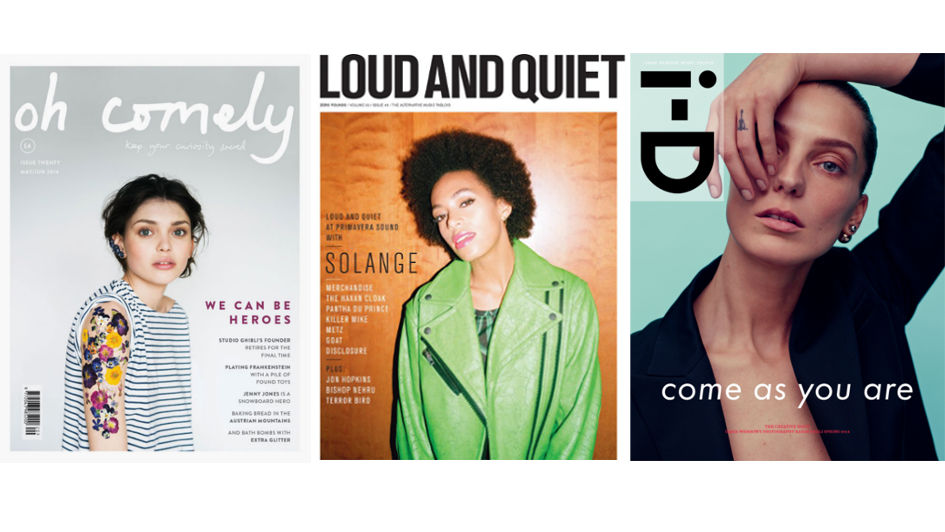
Print advertising isn’t dead. Despite statistics supporting the ever impending total movement to digital marketing, print media is developing a new and creative relevance in marketing communications. Nostalgia has taken hold of European culture, vinyl records are back, flares are cool again (yes, really) and the publishing industry is driving the epidemic; luxury and independent magazines have hit an economic sweet spot and London is the international hub.
The plush magazine market has always been apparent, especially in the UK, with publications targeting micro and niche demographics of flexible and frequent disposable incomes, but this is something new. This is a boom that provides advertisers with an opportunity to effectively establish a new level of brand equity, one that can be targeted extremely precisely but more importantly, to the most vibrant and socially driven demographics.
SEE ALSO: Branding Roundtable #14: Luxury
Oh Comely is a British magazine anchored around alternative style, independent women, and contemporary art. Its premise is to attract the wealthy youth or the new age ‘hipster’ and provides an interesting platform for marketers to utilize. Despite high-printing costs, luxury magazines like Oh Comely reel in large turnovers thanks to the demand of the market, large profit margins, and low expenditures, virtually an untapped channel for clients and agencies to exploit.
Advertising in luxury magazines remains relatively cheap thanks to the explosion of new age publications like Loud and Quiet, Her, and Oh Comely but space will only become more expensive, so it’s time to act now. In terms of reach, or even circulation, luxury magazines are not a prolific outlet so don’t hang your expectations on frequency. Buyers are purchasing a product, not a disposable paper, these magazines are an emotional attachment, the new ‘collectors item’. However, that’s aside from the point, the plush magazine boom is a great place to nurture and grow the image and face of your brand (especially if you’re a small or medium start-up). The readership of these magazines, although small, are the international youth of the world, the gatekeepers to intelligent, vibrant, and cutting edge brand equity—these are the guys you want talking about your brand. And talk they will.
Bigger brands, bigger clients, and bigger budgets can benefit from the luxury magazine sector; it’s becoming increasingly fashionable for blue-chip and larger organizations to appear left-wing, alternative, and even smaller-scale. Google are continuously promoting an ‘intimate’ brand image, supporting socially topical schemes like the growth of local, small and medium-sized enterprises, but with a business model as capitalistic as any other multi-national corporation. It’s simply about creating an approachable attitude.
SEE ALSO: Luxury Branding: New Creative Expressions for New Retail Futures
It would be ridiculous to state that the digital evolution will halter at the front door of the advertising industry, however, headlines proclaim that 86% of consumers suffer from banner blindness and 198 million people globally use ad blockers, leading a £277m online fraud that costs UK advertisers. With this in mind, maybe outdoor media is a rejuvenated solution for clients and agencies, with luxury-magazines driving a new and exciting sub-channel.